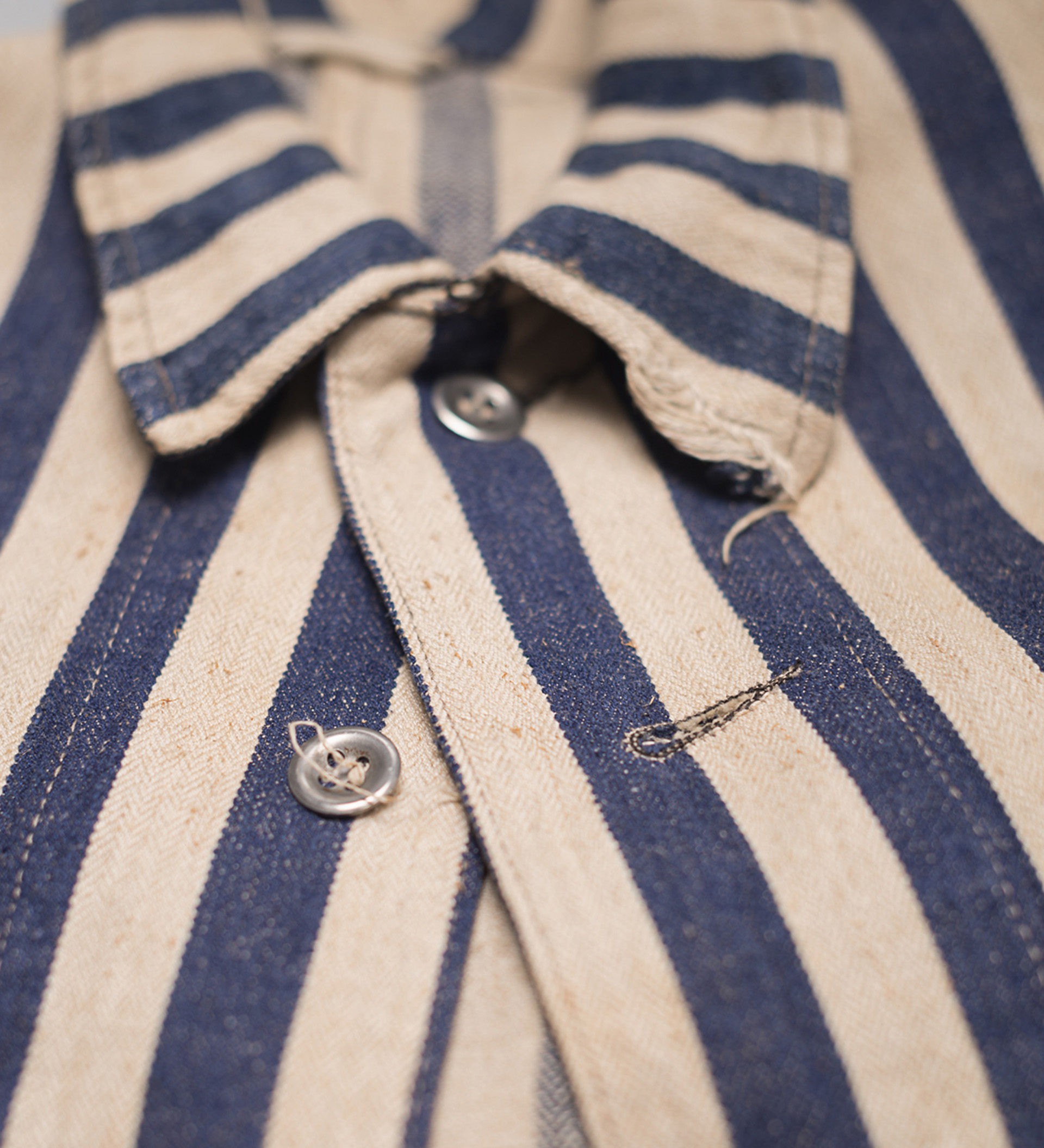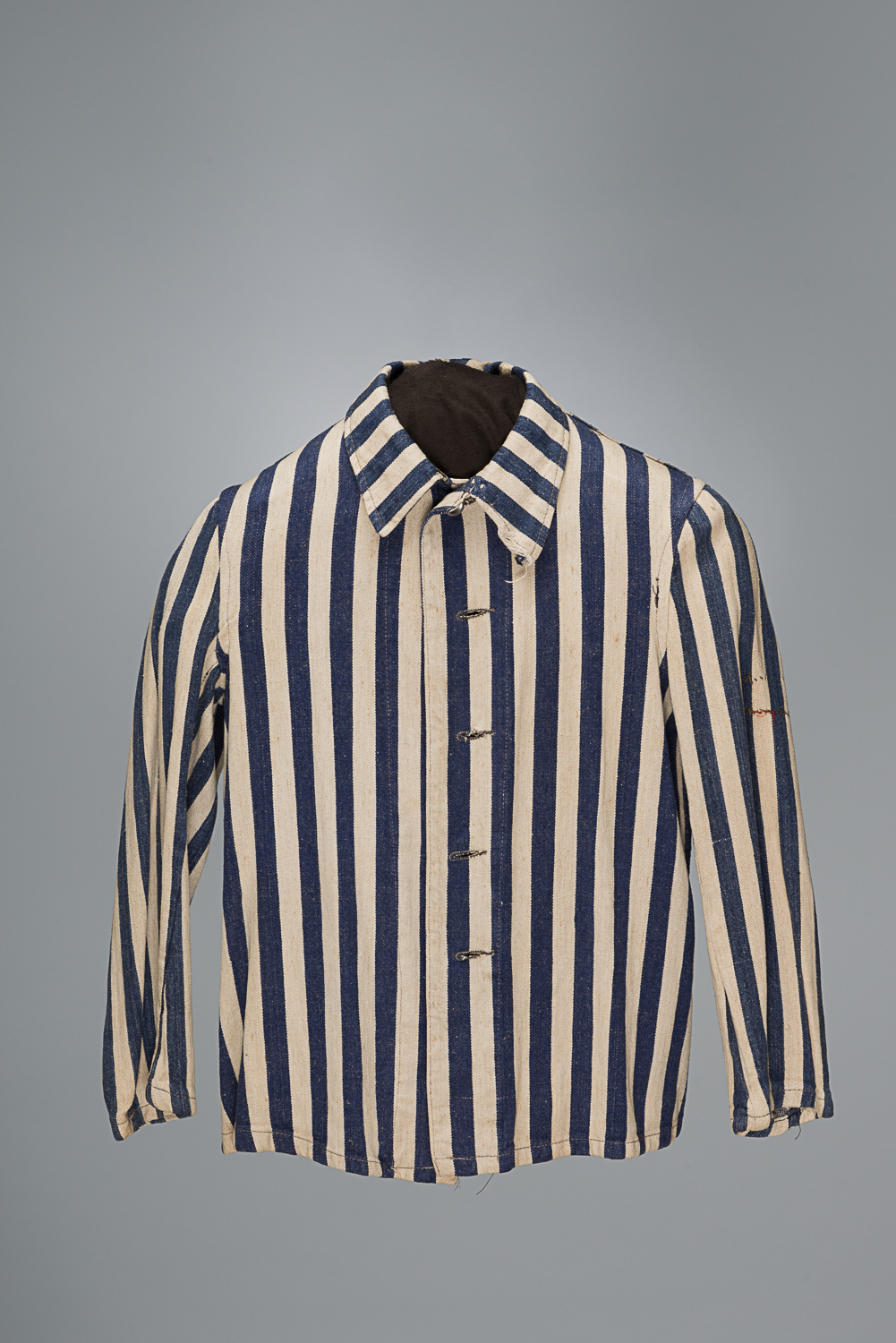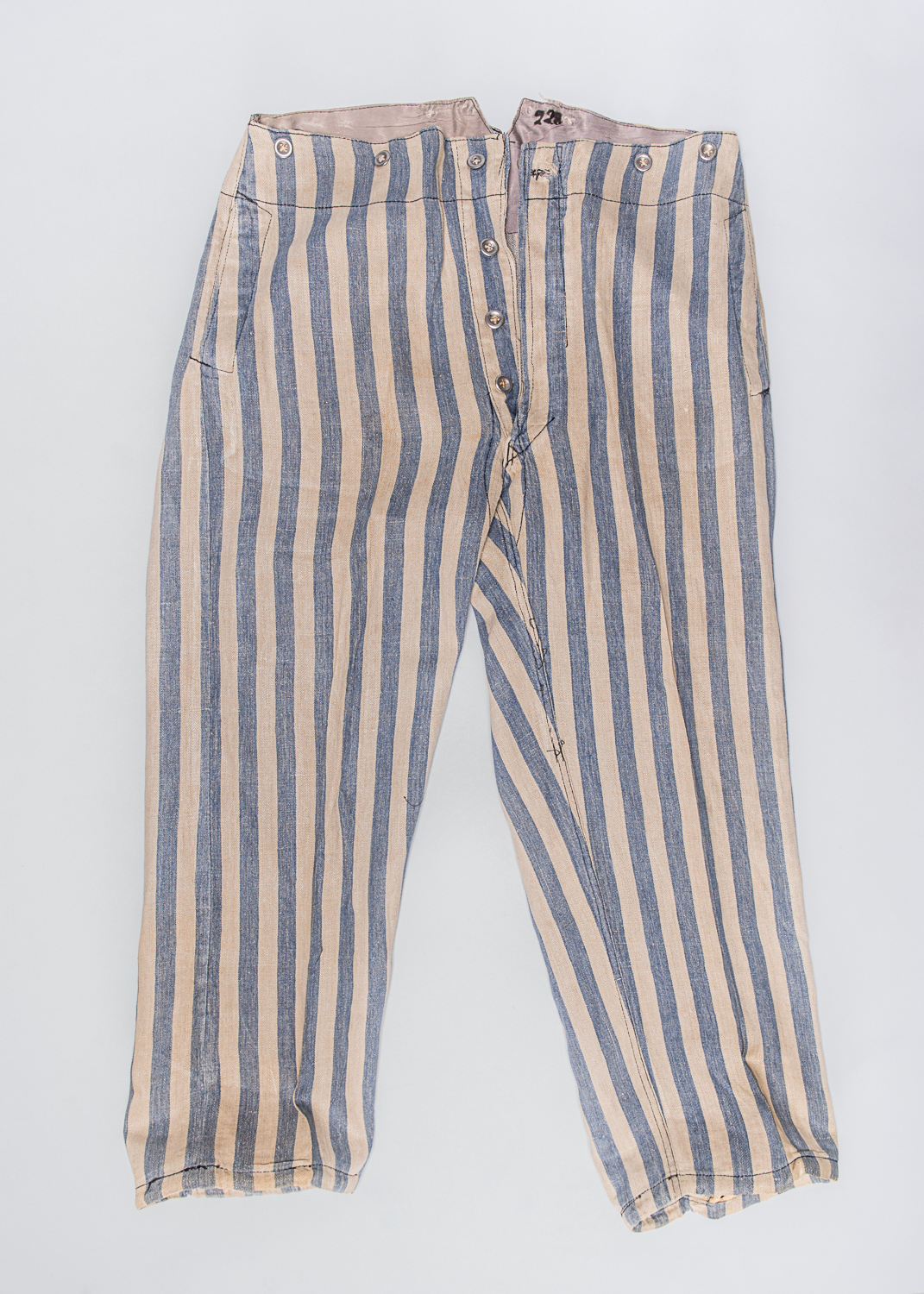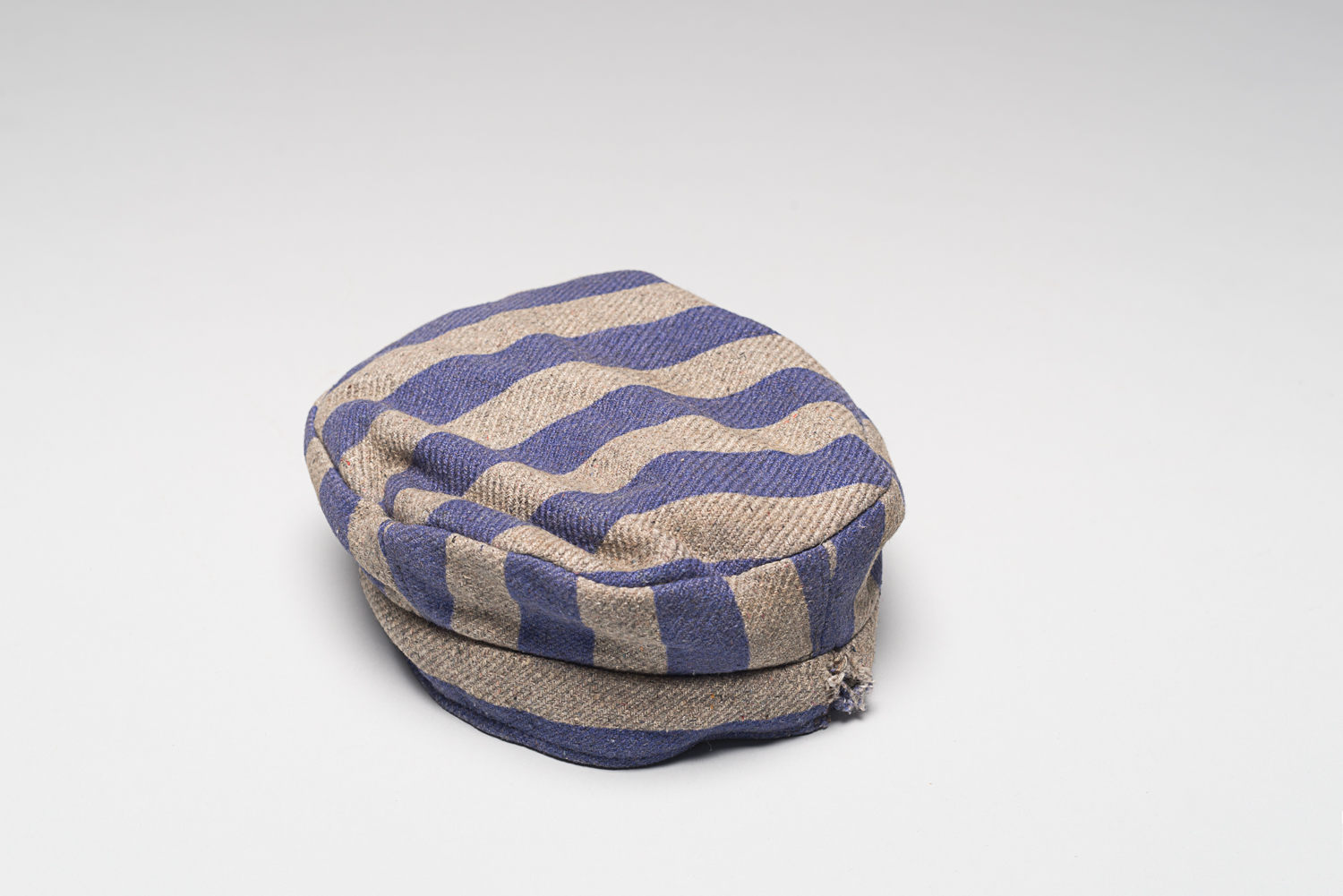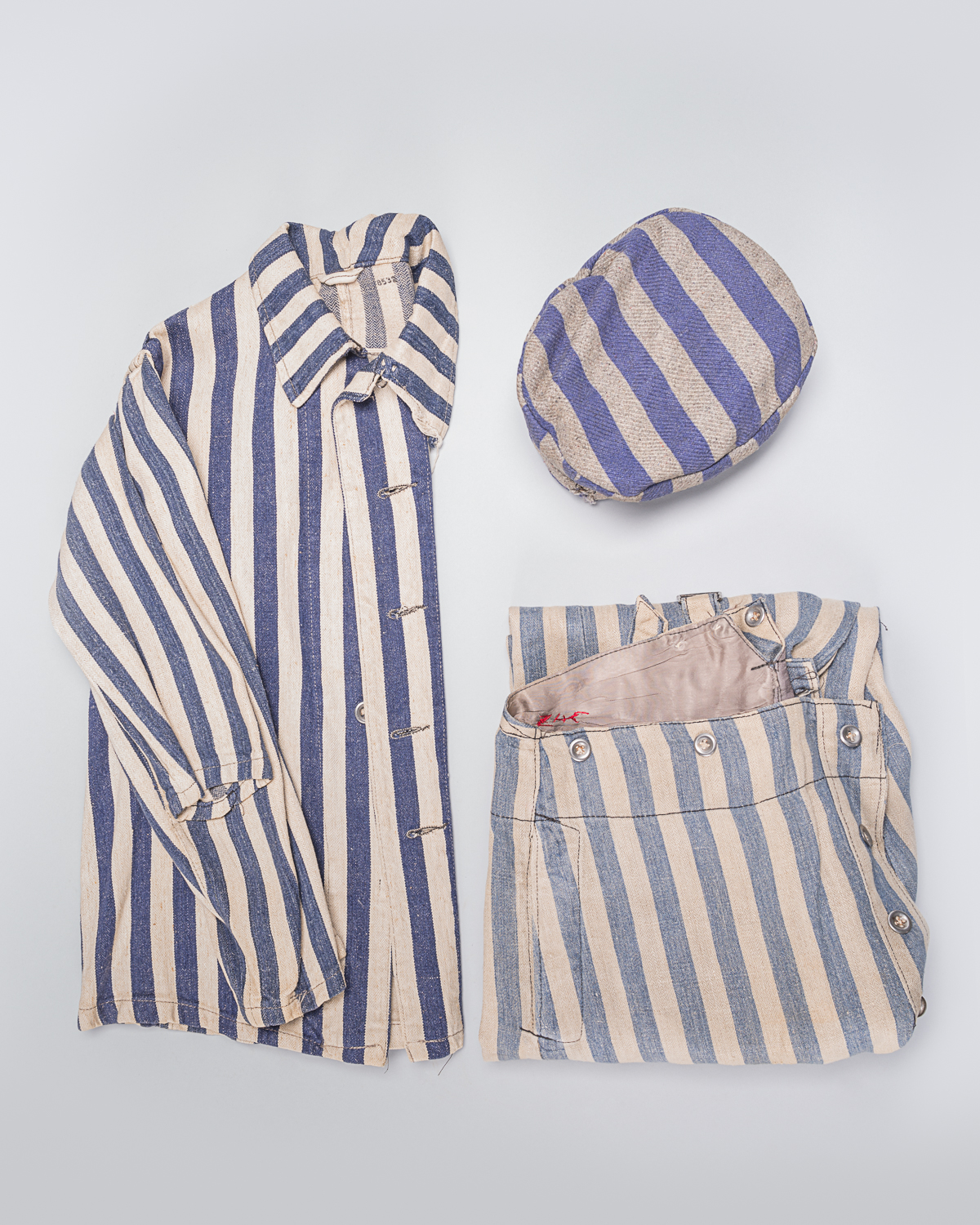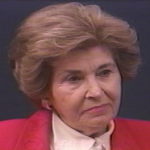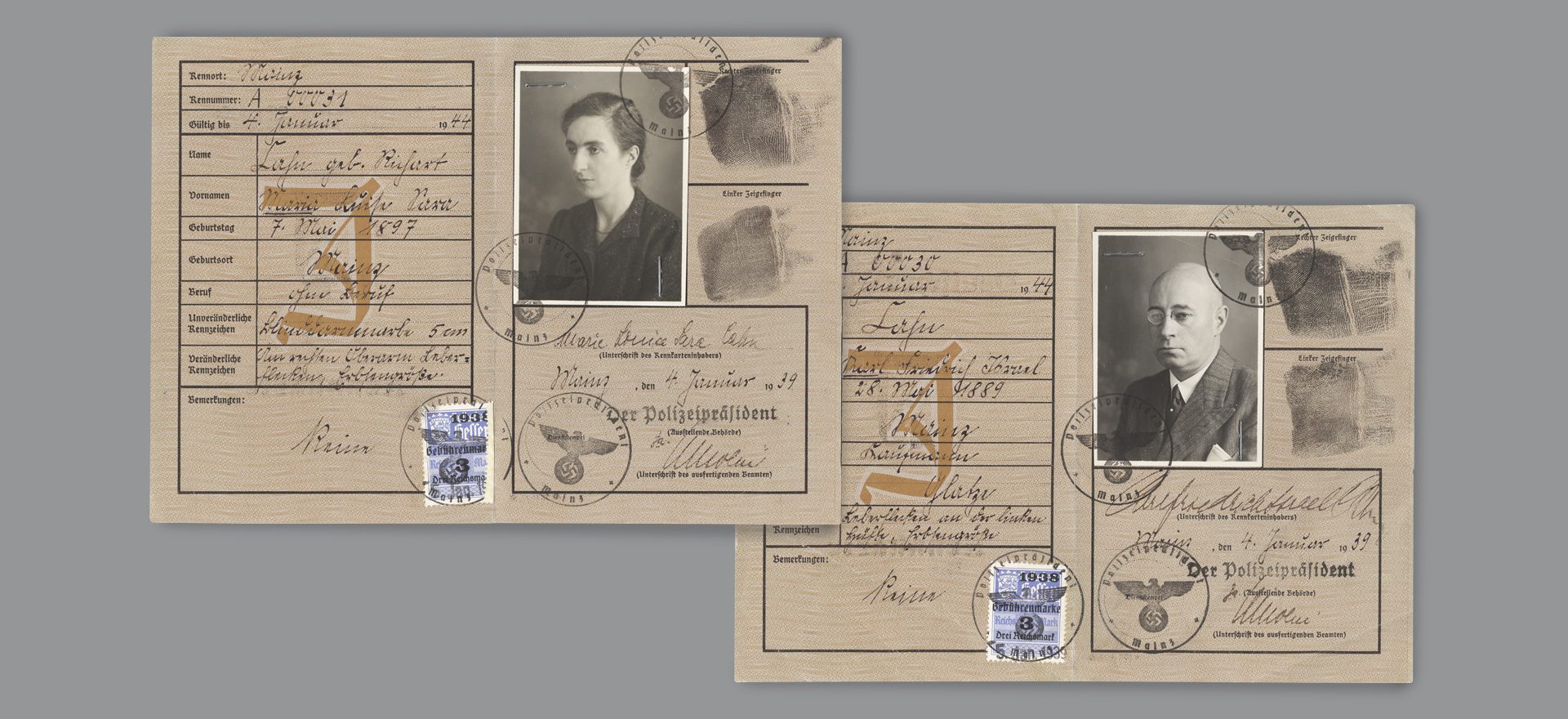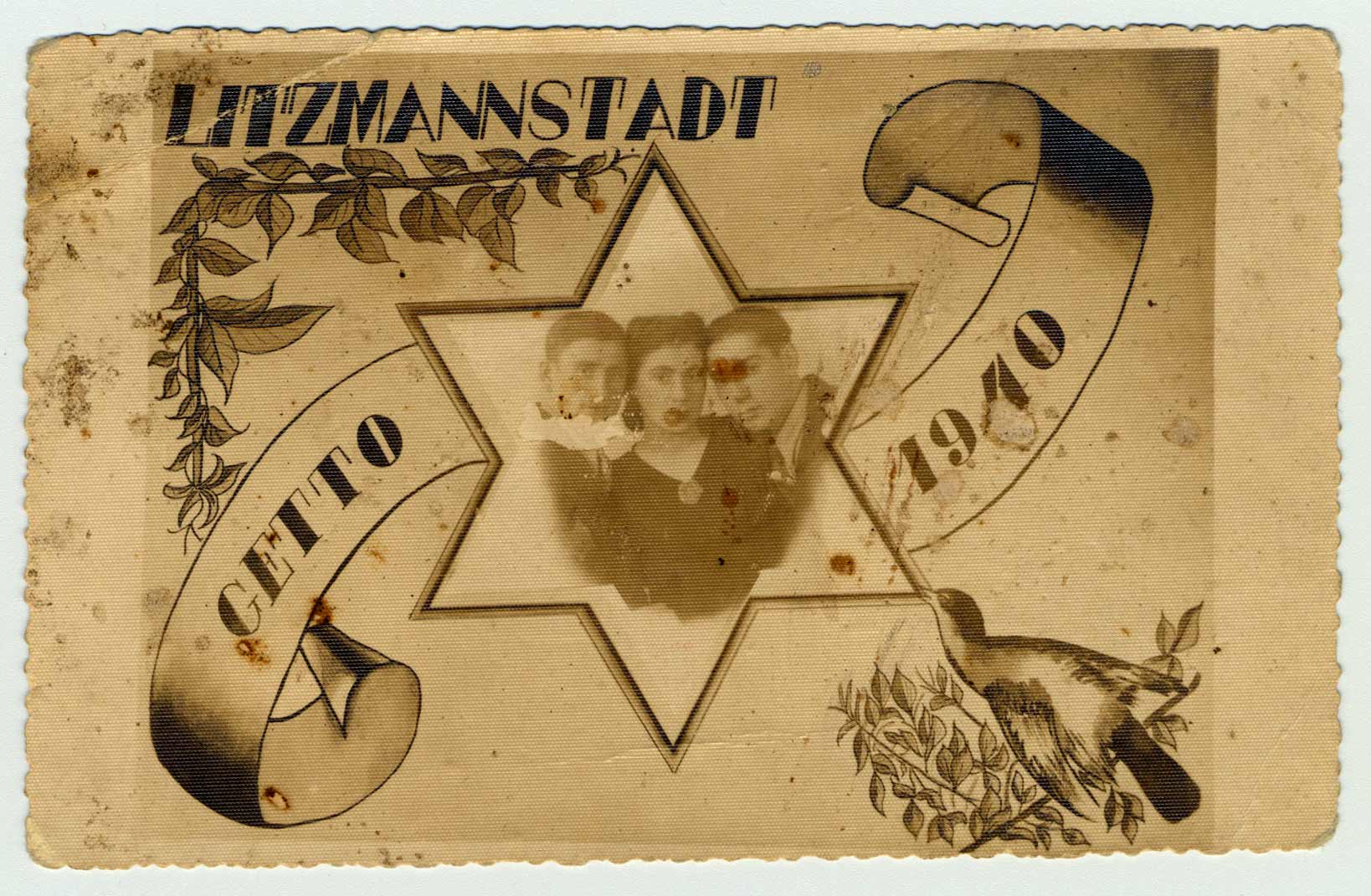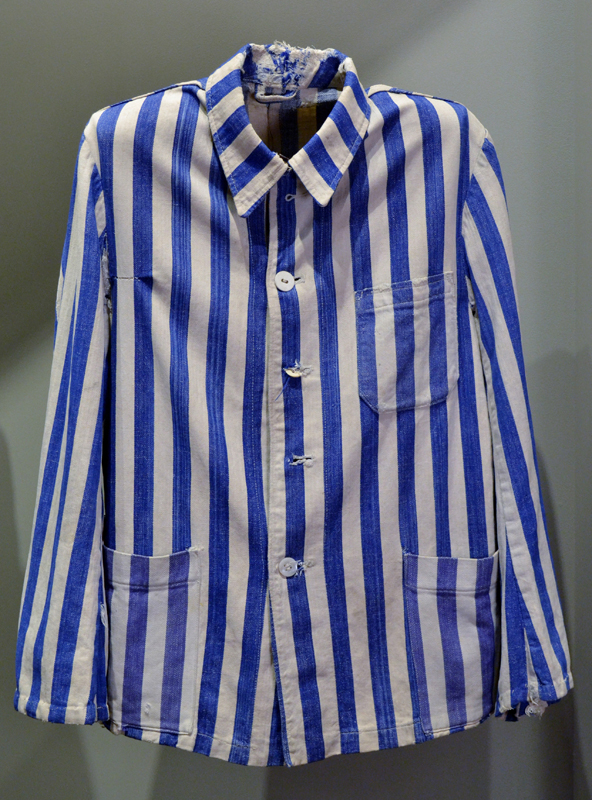This uniform, easily identifiable by its blue and white vertical stripes, belonged to Louis Miller, a former prisoner of the Auschwitz-Birkenau concentration camp.
*Video in French only
The Prisoner Uniform: A Means of Dehumanisation
Upon arrival in the camps, women and men were forced to undress and their personal belongings were taken away. Prisoners selected for forced labour received a uniform like this one. To complete their dehumanisation, prisoners’ names were replaced by a number sewn on their uniforms or tattooed on their bodies.
Louis Miller’s Uniform, His Only Memento from the Holocaust
In May 1944, Louis Miller, his father, and three brothers Arthur, Gabriel, and Ernest were arrested in Romania and deported to Auschwitz. Louis was 19 years old and was selected for forced labour, because of his experience in mechanics. In January 1945, Louis was forced on a death march from Auschwitz to the Buchenwald camp in Germany. The march lasted for three months and Louis had only this uniform to protect him from the cold winter weather.
Louis’ younger brother died during the march, but Louis survived the Holocaust. After the war, he went to study in Paris and immigrated to Canada in 1948. This uniform was the only object he kept after liberation.
Louis died in Montreal in 2009. His wife Cecile Miller donated the uniform to the Montreal Holocaust Museum in 2013 in memory of her husband.
This project is part of the implementation of the of the Plan culturel numérique du Québec
